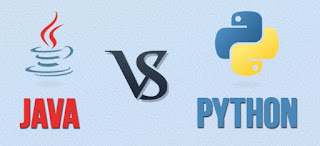A linked list is a way to store a collection of elements. Like an array these can be character or integers. Each element in a linked list is stored in the form of a node.
Node:
A node is a collection of two sub-elements or parts. A data part that stores the element and a next part that stores the link to the next node.
Linked List:
A linked list is formed when many such nodes are linked together to form a chain. Each node points to the next node present in the order. The first node is always used as a reference to traverse the list and is called HEAD. The last node points to NULL.
Declaring a Linked list :
In C language, a linked list can be implemented using structure and pointers .
struct LinkedList{
int data;
struct LinkedList *next;
};
The above definition is used to create every node in the list. The data field stores the element and the next is a pointer to store the address of the next node.
Noticed something unusual with next?
In place of a data type, struct LinkedList is written before next. That's because its a self-referencing pointer. It means a pointer that points to whatever it is a part of. Here next is a part of a node and it will point to the next node.
Creating a Node:
Let's define a data type of struct LinkedListto make code cleaner.
typedef struct LinkedList *node; //Define node as pointer of data type struct LinkedList
node createNode(){
node temp; // declare a node
temp = (node)malloc(sizeof(struct LinkedList)); // allocate memory using malloc()
temp->next = NULL;// make next point to NULL
return temp;//return the new node
}
typedef is used to define a data type in C.
malloc() is used to dynamically allocate a single block of memory in C, it is available in the header file stdlib.h.
sizeof() is used to determine size in bytes of an element in C. Here it is used to determine size of each node and sent as a parameter to malloc.
The above code will create a node with data as value and next pointing to NULL.
Let's see how to add a node to the linked list:
node addNode(node head, int value){
node temp,p;// declare two nodes temp and p
temp = createNode();//createNode will return a new node with data = value and next pointing to NULL.
temp->data = value; // add element's value to data part of node
if(head == NULL){
head = temp; //when linked list is empty
}
else{
p = head;//assign head to p
while(p->next != NULL){
p = p->next;//traverse the list until p is the last node.The last node always points to NULL.
}
p->next = temp;//Point the previous last node to the new node created.
}
return head;
}
Here the new node will always be added after the last node. This is known as inserting a node at the rear end.
Food for thought
This type of linked list is known as simple or singly linked list. A simple linked list can be traversed in only one direction from head to the last node.
The last node is checked by the condition :
p->next = NULL;
Here -> is used to access next sub element of node p. NULL denotes no node exists after the current node , i.e. its the end of the list.
Traversing the list:
The linked list can be traversed in a while loop by using the head node as a starting reference:
node p;
p = head;
while(p != NULL){
p = p->next;
}
Why Linked List?
Arrays can be used to store linear data of similar types, but arrays have following limitations.
1) The size of the arrays is fixed: So we must know the upper limit on the number of elements in advance. Also, generally, the allocated memory is equal to the upper limit irrespective of the usage.
2) Inserting a new element in an array of elements is expensive, because room has to be created for the new elements and to create room existing elements have to shifted.
For example, in a system if we maintain a sorted list of IDs in an array id[].
id[] = [1000, 1010, 1050, 2000, 2040].
And if we want to insert a new ID 1005, then to maintain the sorted order, we have to move all the elements after 1000 (excluding 1000).
Deletion is also expensive with arrays until unless some special techniques are used. For example, to delete 1010 in id[], everything after 1010 has to be moved.
Advantages over arrays
1) Dynamic size
2) Ease of insertion/deletion
Drawbacks:
1) Random access is not allowed. We have to access elements sequentially starting from the first node. So we cannot do binary search with linked lists.
2) Extra memory space for a pointer is required with each element of the list.








